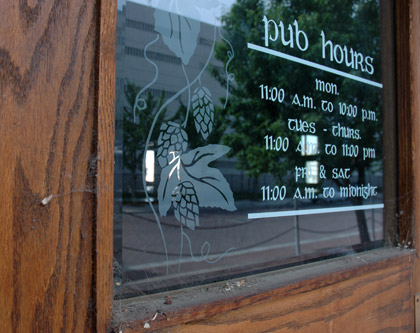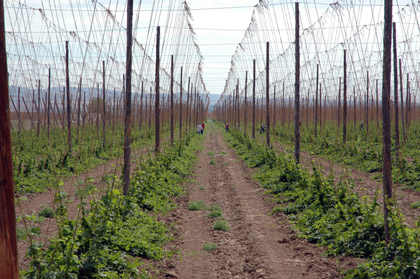I’ve been amazed reading reports from SF Beer Week, and am even more astonished when I look over the ridiculously long list of events planned for Philly Beer Week. These are the big dogs, but Jay Brooks has pointed out “beer weeks” are popping up all over.
Has to be good for local beers, I think. But let’s hope we don’t get another round of arguing about which is the best beer city in the United States or where the best beers are brewed. Why? Read Ron Pattinson’s post on “Beer nationalism” and you should understand.
The world of beer is one exciting whole. Not a series of competing fragments. “Which country brews the best beer?” What sort of stupid question is that? “Where’s the pub?”, “Can I have a pint of that, please?”, “What are you having?” They’re good questions.
Brilliant.
– Here’s another reason SF Beer Week was a good idea: A beer tasting hosted at Alpha Sigma Phi in Berkeley. Yes, I too, had to get past the fraternity part. But Mario at Brewed for Thought put the event together and writes about it.
– Repeat after me. When I read that a beer has 108 or 128 or 104 IBU (when I read that a beer has 108 or 128 or 104 IBU) I will ask if that was measured in a lab or if that is calculated (I will ask if that was measured in a lab or if that is calculated).
Because I know of only two beers (the Samuel Adams Imperial Pilsner and Bell’s Big Head San Diego Style Ale brewed for the 2008 Craft Brewers Conference) that clocked over 100 IBU when verified by a laboratory. Everybody else is guessing.
So you should read the Lies, Damn Lies and Statistics entry in the Deschutes Brewery blog. Hop Henge Experimental IPA is brimming with hop flavor and bitterness. But in case you’ve been wondering about the 95 IBU listed on the label, well you won’t be seeing that number anymore.
The first time Deschutes had the beer tested the lab found 80 IBU. The brewers since beefed up the hop additions (resulting in a picture you should look at) and had Hop Henge tested again. This time 87 IBU.
The moral of the story for us is we will not again put 95 IBUs on the label. The moral of the story for you might be a wink next time someone tells you their beer has 120 IBUs in it (or even 95 for that matter).
Wink, indeed. And ask the brewer to talk about hop flavor instead.
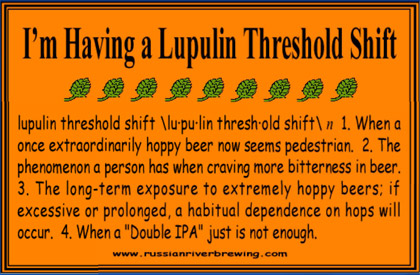
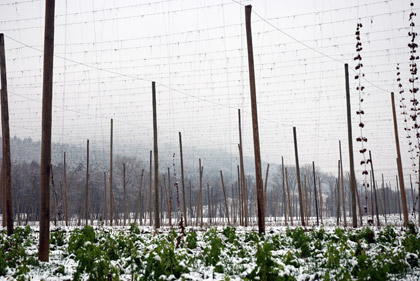
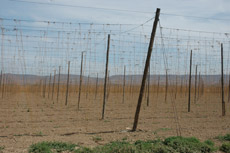 Let’s start with good news from Yakima. Here’s one of several new hopyards we saw Sunday and Monday. You can see why farmers point out it takes more than a year to make a hop field productive. Hops are well up the strings in nearby fields.
Let’s start with good news from Yakima. Here’s one of several new hopyards we saw Sunday and Monday. You can see why farmers point out it takes more than a year to make a hop field productive. Hops are well up the strings in nearby fields.